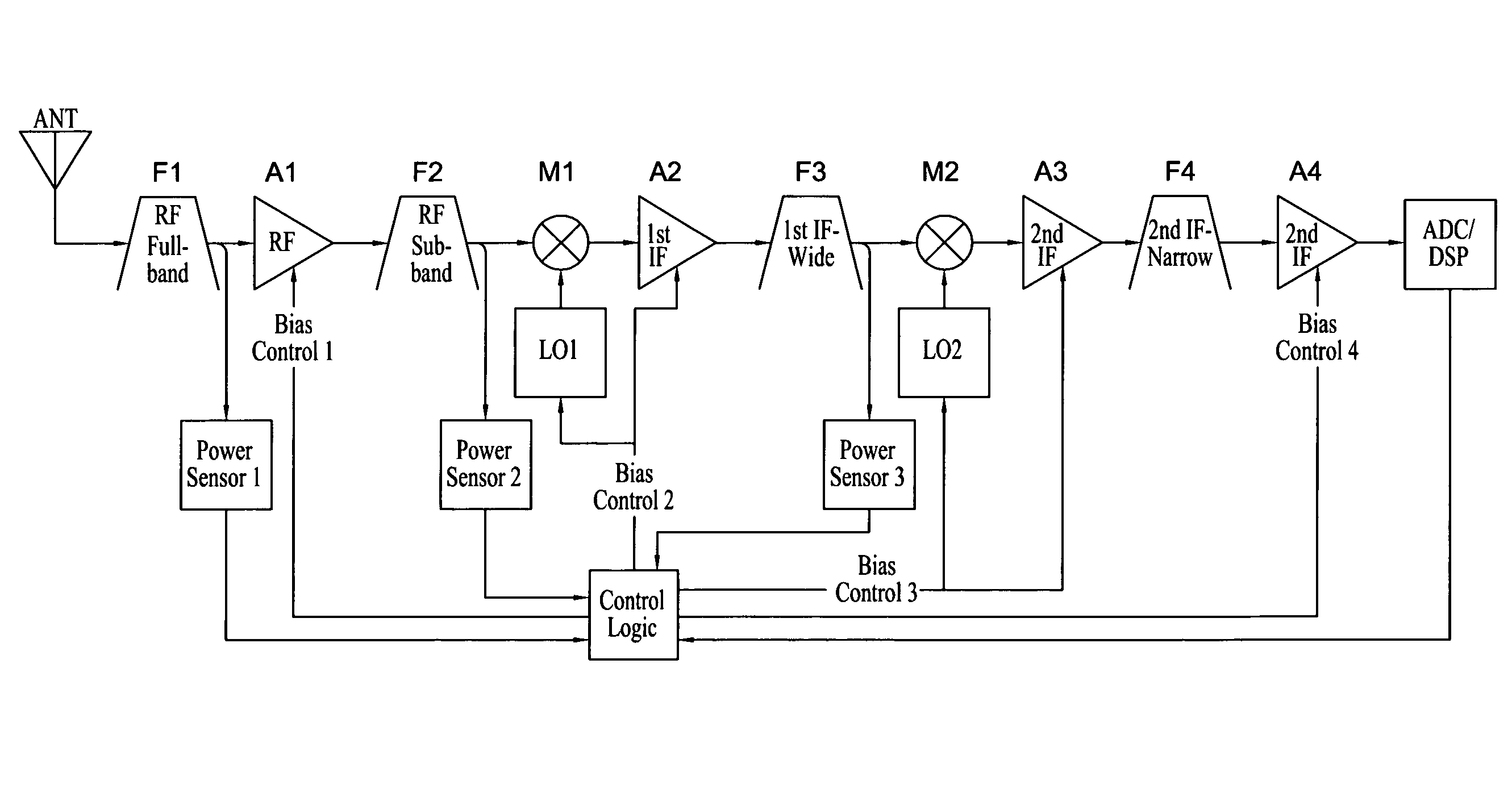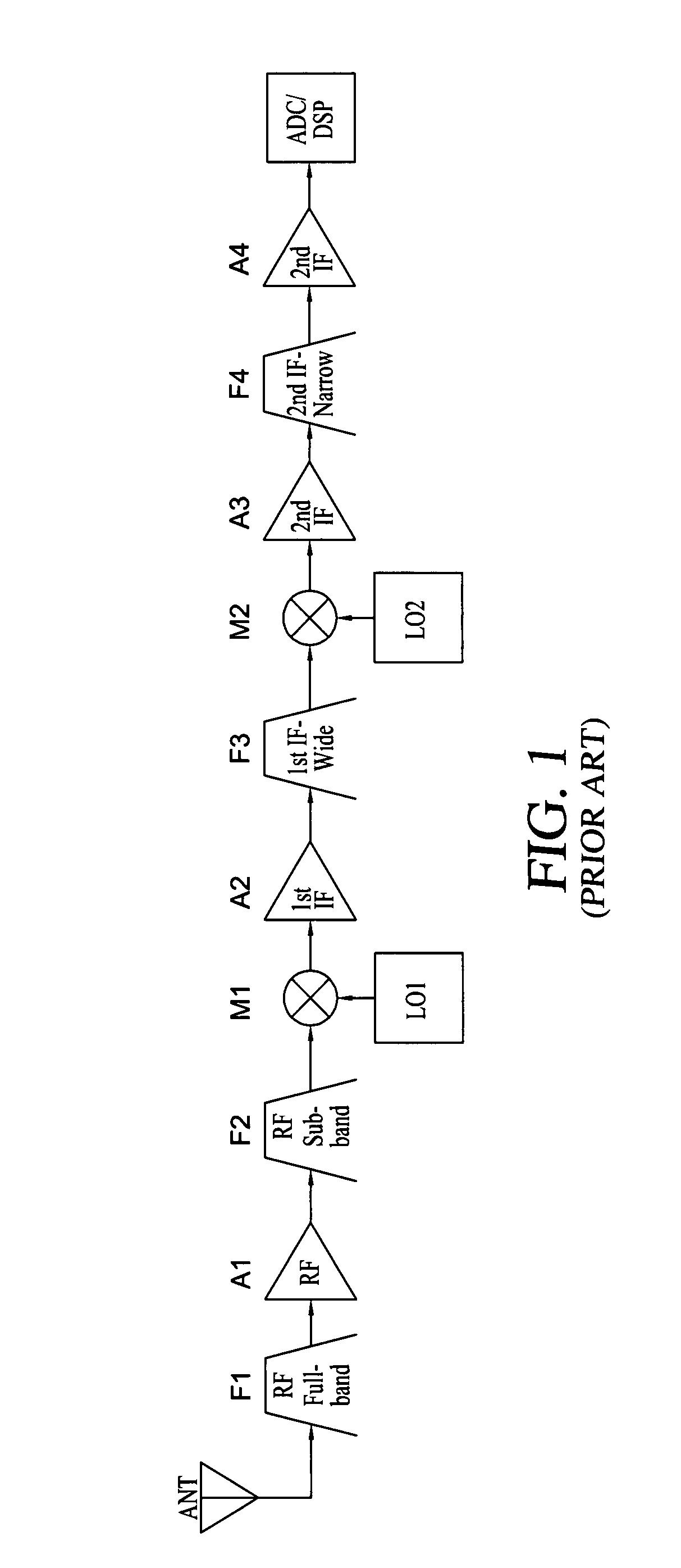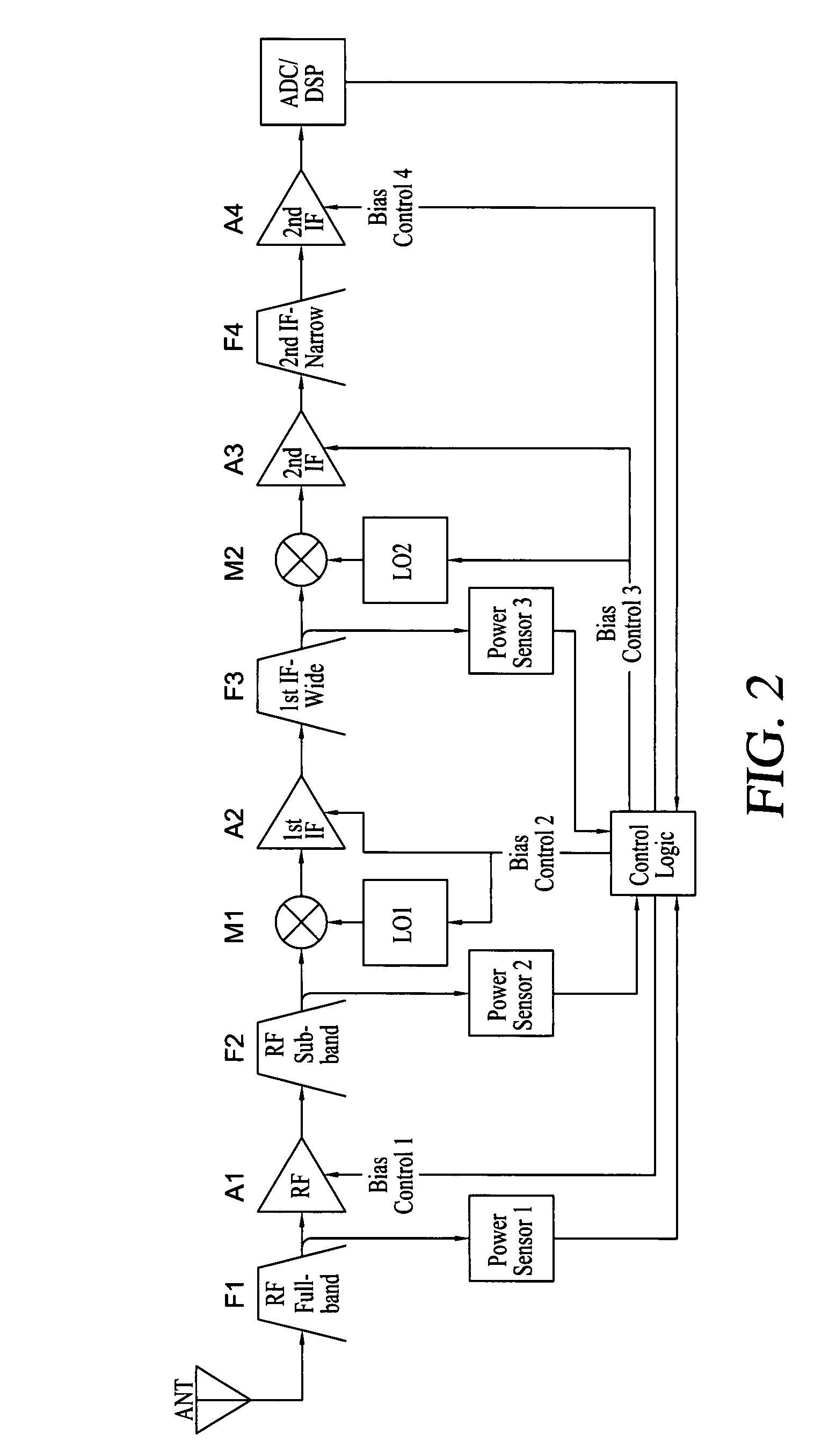RF receiver utilizing dynamic power management
a technology of dynamic power management and rf receiver, which is applied in the direction of radio transmission, amplifiers, electrical equipment, etc., can solve the problems of high power consumption, low power efficiency, and the majority of receivers, especially those fielded on ground vehicles or aircraft, will spend a significant amount of time in benign interference environments, so as to reduce the overall power consumption and thermal load of rf receiver, reduce the maximum power, and degrade the reception of the desired signal
- Summary
- Abstract
- Description
- Claims
- Application Information
AI Technical Summary
Benefits of technology
Problems solved by technology
Method used
Image
Examples
Embodiment Construction
[0019]Referring now to FIG. 2, a preferred embodiment of a radio frequency (RF) receiver utilizing dynamic power management for administration of power consumption in accordance with the principles of the present invention is illustrated. The RF receiver includes an antenna (ANT) that receives RF signals in a high interference and / or co-site environment. An RF full band filter (F1) filters the received RF signals from an output of the ANT to filtered full band RF signals. The F1 may have, for example, for the purposes of illustration but not limitation, a bandwidth of approximately 1 GHz.
[0020]An RF amplifier (A1) amplifies the filtered full band RF signals to enlarged full band RF signals suitable for RF sub-band filtering. The A1 has programmable bias points (BiasControl1) with a gain of, for example, approximately 10 dB.
[0021]An RF sub-band filter (F2) filters the enlarged full band RF signals to sub-band RF signals. The F2 may have a bandwidth of, for example, approximately 100 ...
PUM
 Login to View More
Login to View More Abstract
Description
Claims
Application Information
 Login to View More
Login to View More - R&D
- Intellectual Property
- Life Sciences
- Materials
- Tech Scout
- Unparalleled Data Quality
- Higher Quality Content
- 60% Fewer Hallucinations
Browse by: Latest US Patents, China's latest patents, Technical Efficacy Thesaurus, Application Domain, Technology Topic, Popular Technical Reports.
© 2025 PatSnap. All rights reserved.Legal|Privacy policy|Modern Slavery Act Transparency Statement|Sitemap|About US| Contact US: help@patsnap.com



